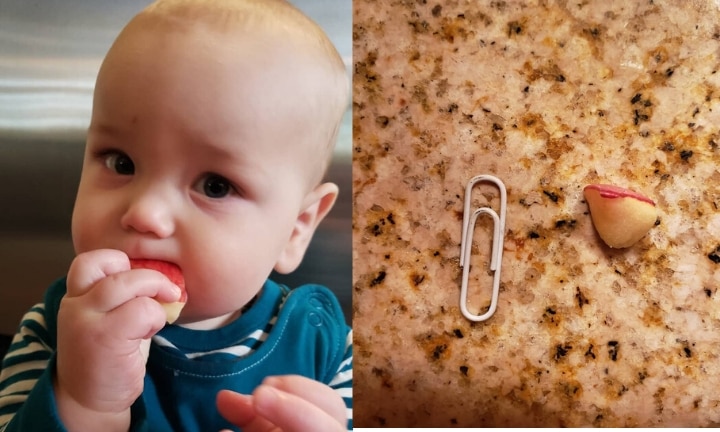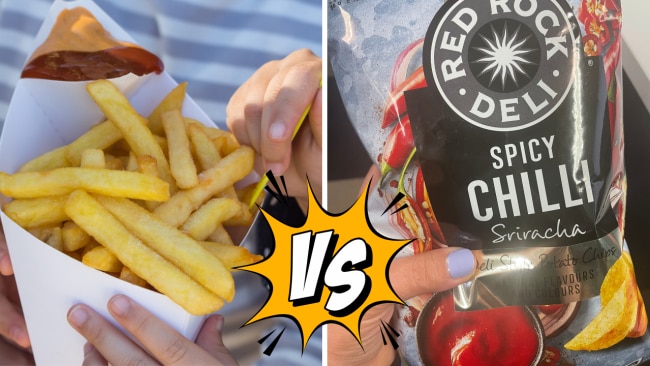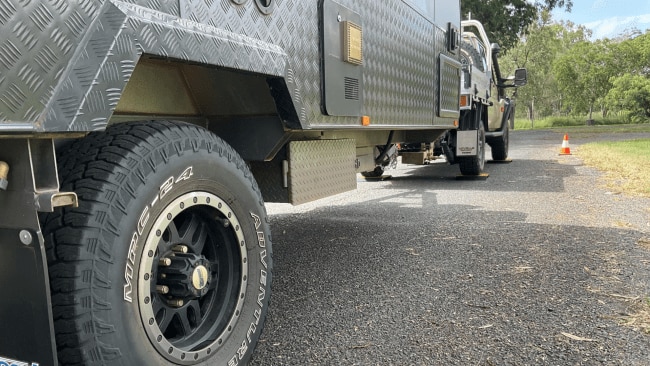Confronting video shows just how dangerous button batteries are if swallowed
Life-threatening damage can occur in as little as two hours.
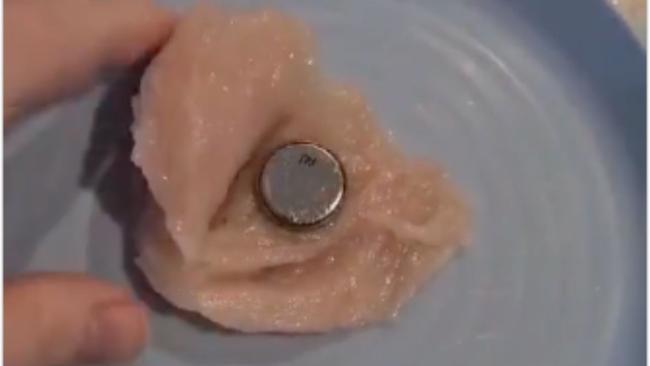
Lifestyle
Don't miss out on the headlines from Lifestyle. Followed categories will be added to My News.
At CPR Kids, we often talk about button battery incident prevention and first aid... here is why.
We recently did an experiment that visually demonstrates just how corrosive button batteries are.
This time-lapse experiment shows a room-temperature chicken fillet and a button battery that had been coated in saliva. There is visible damage after just 30 minutes.
The results after two hours really demonstrate how much damage can be caused when a child swallows a button battery - this is why it is deemed a medical emergency. Life-threatening damage can occur in as little as two hours.
Want to join the family? Sign up to our Kidspot newsletter for more stories like this.
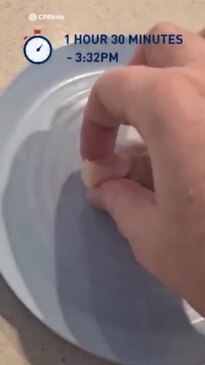
What to do if your child swallows a button battery
In Australia, around 20 children a week present to an emergency department with a button battery-related injury – that’s over 1,000 children every year.
The OFFICIAL ADVICE in the incident of a button battery being ingested;
- If your child is in respiratory distress – call an ambulance 000 and follow the operator’s instructions
- If they are breathing fine but you suspect (or know) they have ingested a button battery, call the Poisons Information Centre on 13 11 26 immediately – they will assess the circumstances of your situation and advise if/how (how much and how often) to give honey and direct you to an emergency department that is best able to help your child.**
NSW Poisons Information Centre advises
- If your child is having any difficulty breathing, call 000 immediately.
- If your child is not having difficulty breathing, immediately call the Poisons Information Centre 13 11 26.
- You will be directed by Poisons staff to an Emergency Department that is best able to treat your child.
- Do not try to make your child vomit.
- Do not let your child eat or drink while awaiting medical advice.
RELATED: Toddler dies after swallowing button battery
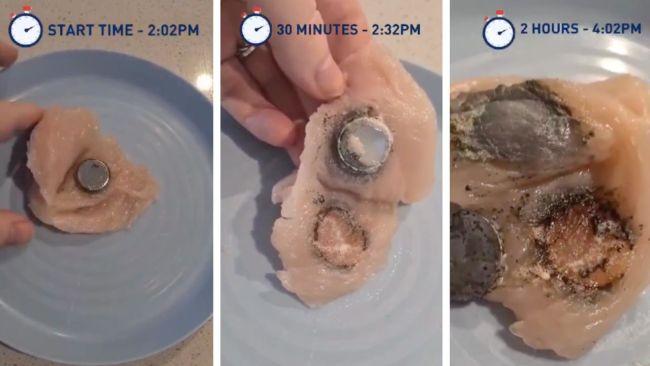
Why? You will be told by a medical professional at Poisons Info exactly what you need to do - what steps need to be taken to best help your child, including directing you to an emergency department that is best able to help your child and advise on the use of honey** (depending on where you live, ambulance or hospital may administer honey).
It is vital that in the event of your child ingesting a button battery, you call the Poisons Information Centre on 13 11 26 (available 24/7), as they will assess YOUR specific situation and give the CORRECT treatment for your child.
Again, if your child is in respiratory distress though, you must call an ambulance, immediately.
You can have a look at the button battery fact sheet from NSW Poisons Information Centre for more. We also have a free button battery guide available which includes information on the possible signs of ingestion, how to act in response to a possible or known ingestion, and prevention tips – including information on relevant product recalls, and a how-to video on disposing of button batteries safely.
**Please note, at this time the protocol around giving honey varies between the states and territories, and health services. We hope there is alignment in the near future. Honey should not be given to children under one year of age. Know how to respond in an emergency involving your little one. Book a baby + child CPR & First Aid class today so that you know what to do in the event of a choking emergency.
Sarah Hunstead is a Paediatric Nurse and founder of CPR Kids. She is also the author of ‘A Life. A Finger. A Pea Up a Nose’ and CPR Kids essential First Aid Guide for Babies and Children.
More Coverage
Originally published as Confronting video shows just how dangerous button batteries are if swallowed


